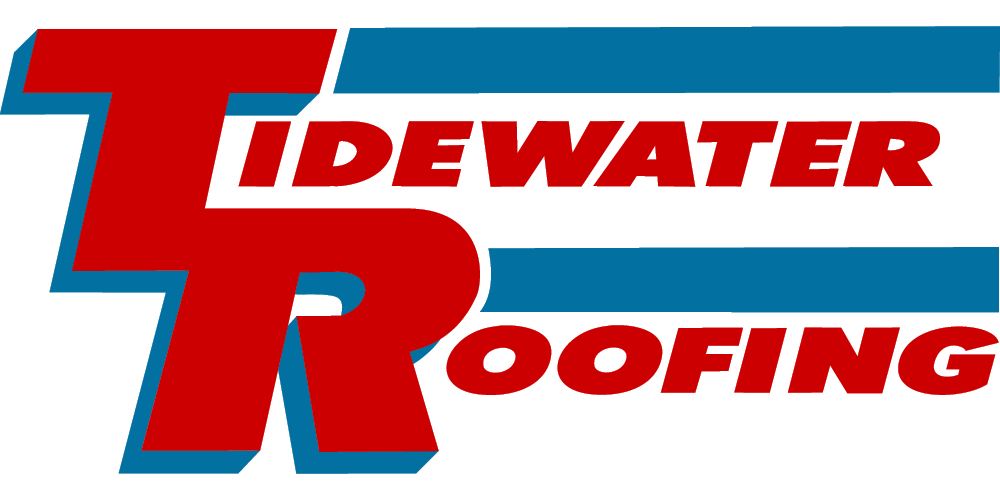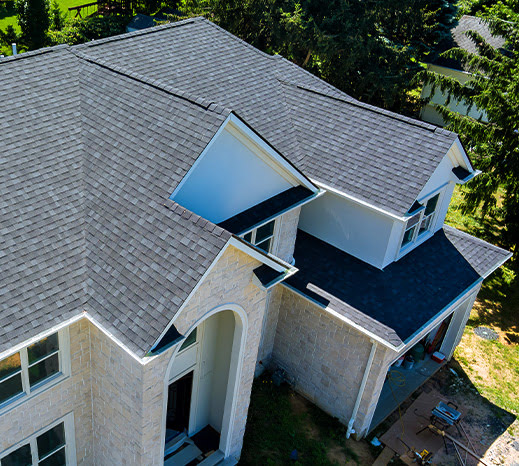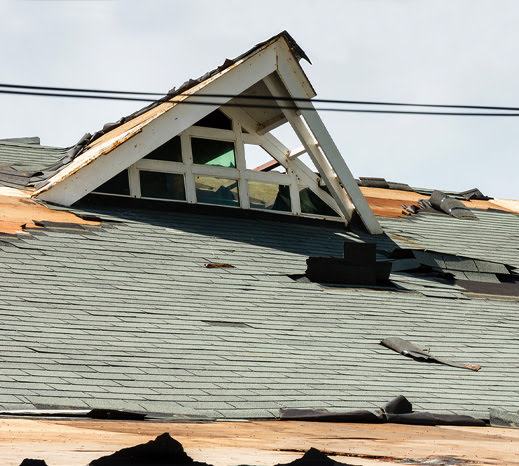When you can’t use shingles to protect a building with a flat roof from rain and other hazards, different roofing materials must be used. But e...
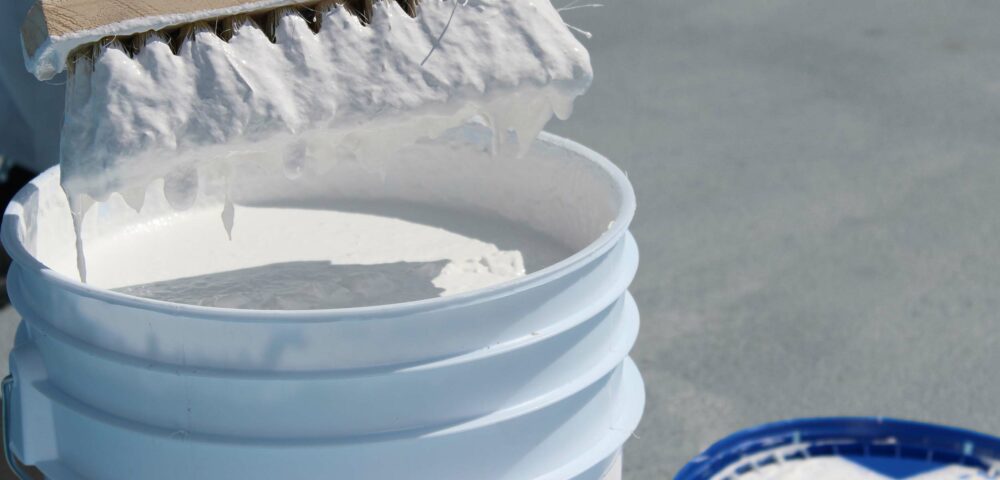
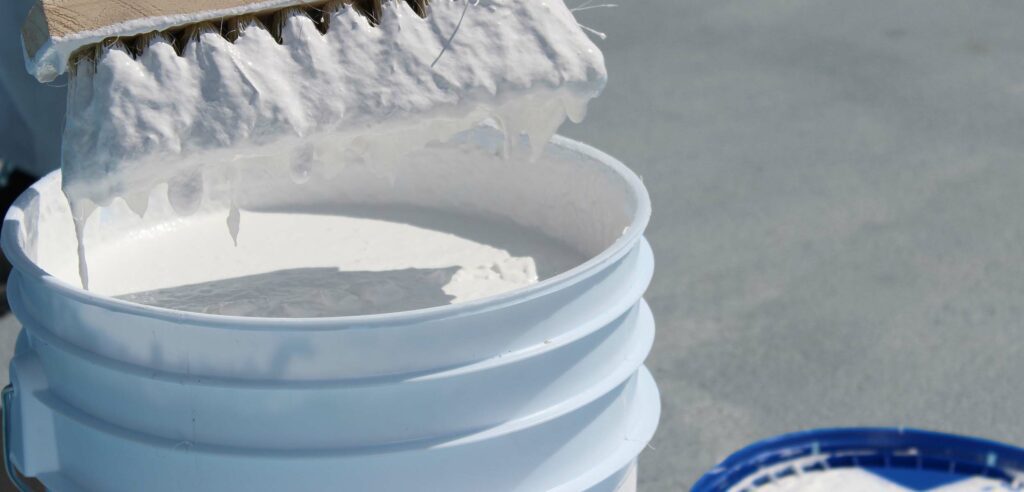
When you can’t use shingles to protect a building with a flat roof from rain and other hazards, different roofing materials must be used. But eventually, all roofs need a little TLC to keep things dry inside. One of the ways a flat roof can be restored is with commercial roof coating.
Roof coatings are designed to extend the life of a flat or low-slope roof. One or more layers of resin or chemical compound liquid are applied to an existing roof using a roller or a sprayer. Once set, the liquid acts as another layer of protection against UV rays, water, debris, and foot traffic. Some materials, like the GE Enduris Roof Coating, are rain-ready in as little as 30 minutes after application.
It may be time to look at a commercial roof restoration on your property. Roof coatings are often more economical and efficient than a complete roof replacement. Let’s learn why!
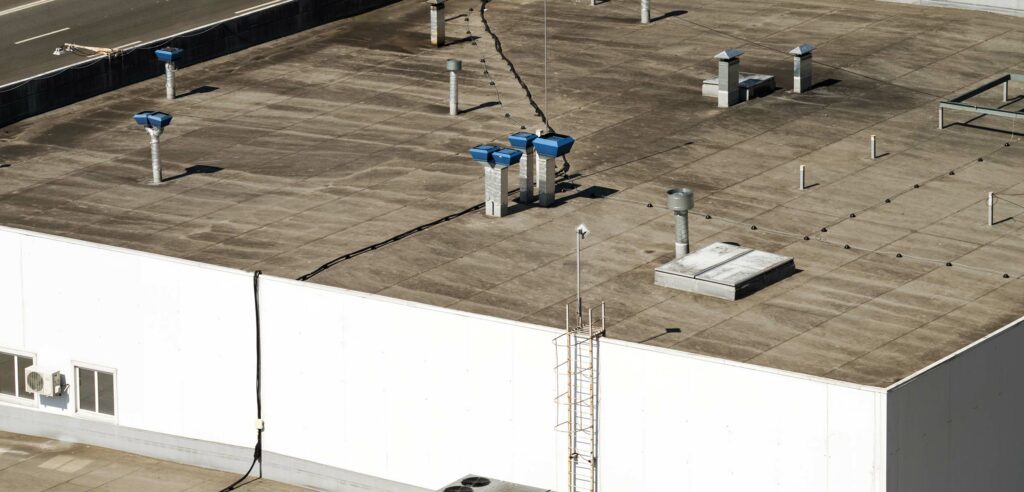
The Benefits of Commercial Roof Coating
Throughout the year, a flat roof faces extreme fluctuations in temperature. The stress from expansions and contractions on a membrane rooftop results in blisters and cracks at weak points. Edges, seams, and penetrations, such as at vents and pipes, are often the spots where problems first appear.
Commercial coating helps solve some of the challenges that all flat roofs eventually face.
Extend the Life of Your Roof
Liquid roof coatings add a flexible and UV-resistant layer to your flat roof. As the coating is applied, it self-levels and seals any imperfections in the membrane. Once the liquid has fully set, it can flex without any further expansion and contraction. No more cracks and blisters!
Roof coatings are designed to reflect sunlight. This means your commercial roof is less vulnerable to the sun's rays, and weak points are not as easily damaged by harmful UV light.
The life of a flat roof can be extended as much as 20 years with a professional commercial roof coating! In most cases, once the lifespan of a coating ends, the roof can be recoated to further extend the life of the original roof.
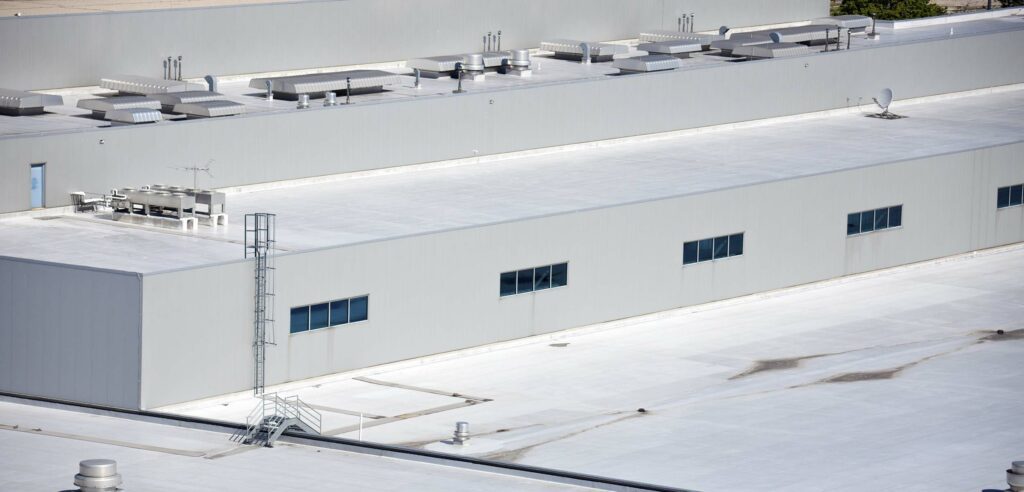
Keep Your Building Nice and Cool
Flat roofs absorb and trap heat, which in turn warms the building underneath. This can make indoor spaces feel almost uninhabitable in the summer months unless your AC is pumping hard. Since commercial roof coatings are most often white or lightly colored, they reflect sunlight very effectively.
When solar rays are reflected, it helps keep your building at a comfortable temperature. Your facility won't feel like a sauna to workers and customers! Plus, you’ll get the additional benefit of the reduction in energy costs because you’re demanding less from your air conditioner.
The Benefits of Roof Coating
A complete roof replacement is needed when the original roof is beyond the point of restoration. This can result from structural issues due to water damage or when materials have gotten so old they’ve nearly turned to dust. But for many commercial buildings, an old roof can be restored.
Commercial roof coating is an ideal treatment for extending the life and improving the performance of a flat roof.
Keep Your Business Open
For whatever reason, people don’t always think of a new roof as a major renovation. The reality is that a complete roof replacement is disruptive to everyday life. This is especially true when it comes to commercial facilities.
During a re-roof, accessibility to the building can be difficult. Vehicles, man-lifts, and materials are moving around constantly, which can create safety hazards. A complete re-roof will also require parts of the building to be exposed during construction. Businesses often temporarily close or limit operations while a roof replacement is in progress.

Roof Coating is Much Less Invasive
Since the coating is applied on top of the existing roof, there is no need for a loud, dusty tear-off. Electing for a commercial roof coating prevents your building from being exposed, unlike certain roof repairs or replacements. And roof coatings can be applied in less time, reducing disruptions to employees and customers.
Cost of Roof Coating
Roof coating is substantially more cost-effective than a complete roof replacement. Firstly, there is no added cost to dispose of old materials. In addition, due to the efficiency of the process, labor costs are often noticeably lower.
The cost of materials will differ depending on the coating you choose. Using a single-coat primerless application, like the GE Enduris High Solids Roof Coating, is a great way to reduce your price on materials. In general, the expense shouldn’t equal that of an entire new roof replacement.
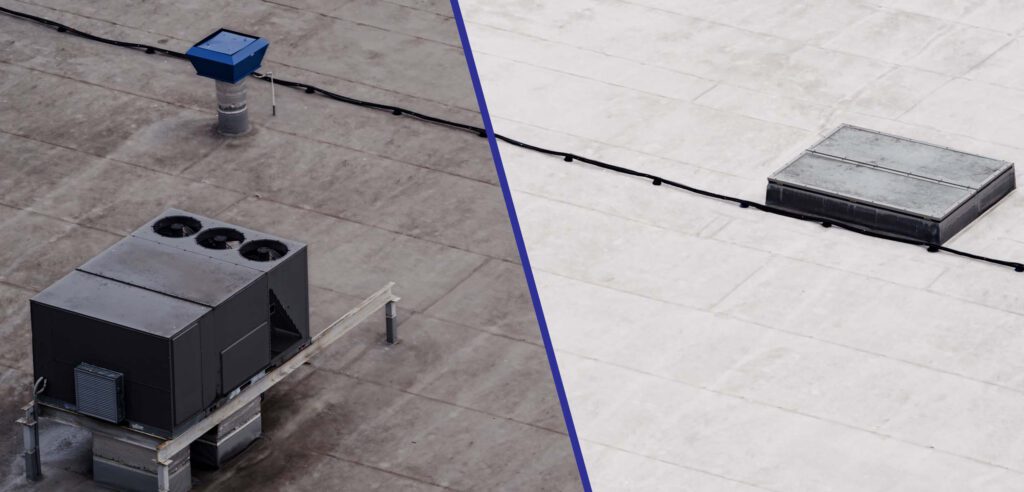
Types of Roof Coating
Acrylic
If UV protection is a priority, water-based acrylic coatings are a great choice. Acrylic coatings provide flexibility to single-membrane and metal roofs. They are highly reflective and provide adequate protection against UV rays.
However, acrylic coatings can be fickle when it comes to curing. Humidity and cold weather can compromise cure time and even prevent the coating from curing properly. Typically temperatures need to be 40° and rising for application. Additionally, ponding water will degrade an acrylic coating over time. This is important to keep in mind when selecting a roof coating.
Silicone
Much like acrylic coatings, silicone roof coatings provide effective UV protection. Its high elasticity allows it to adhere firmly to the existing roof when applied. Silicone coatings cure quickly in various climates.
Silicone roof coatings have become increasingly popular in recent years. The primary reason is their resilience to harsh weather and ability to withstand ponding water. Another attractive feature of silicone coatings is that they are compatible with almost every existing roofing substrate.
Polyurethane
Polyurethane is a solvent-based coating often chosen for its durability and resilience to abrasion. This is ideal on roofs that experience a higher level of traffic. Like silicone, its flexibility helps poly coating adhere well to almost any commercial roofing substrate.
The 2 main types of polyurethane roof coating are:
- Aliphatic, which has a high UV stability and is usually used as a topcoat.
- Aromatic, typically used as a base coat due to a lower UV stability.
PMMA-Based
PMMA (polymethyl methacrylate) based coatings are solvent-free resins that require a catalyst to start the curing process. Once catalyzed, the resin is applied similarly to other coatings, although in smaller quantities due to the short curing time. Products differ, but some PMMA resins are set and waterproof in as little as 15 minutes from catalyzation. For application, temperature must be 40° and rising.
PMMA-based coatings are more costly than the other options, and they often require a priming resin to be applied to meet warranty standards.
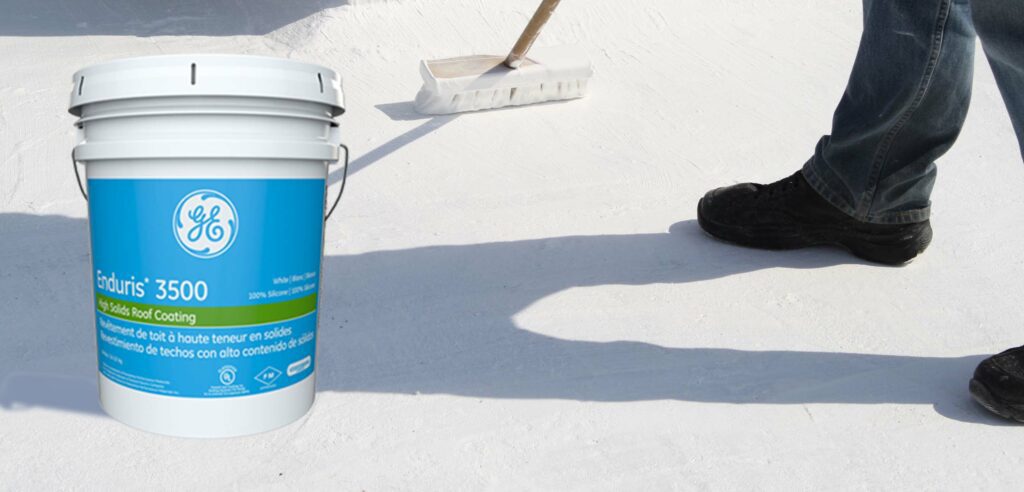
GE Enduris Roof Coating System
If the time has come to restore your commercial flat roof, Tidewater Roofing has the answers and the know-how to get the project done. We apply a simple 3-step approach to our commercial roof coatings and offer 10, 15, and 20-year warranty options. With an efficient, professional installation of the GE Enduris High Solids Roof Coating, you save time and money.
Using a coating such as GE Enduris that can be applied in temperatures as low as 0°F, you can schedule an application in virtually any month with no delays on account of cooler weather. The flexibility and durability of the Enduris roof coating provides superior UV protection to almost any substrate. And the seamless finish helps eliminate weak points where water can infiltrate your building.
Give Tidewater Roofing a call and find out how you can save up to 35% on your energy bills and extend the life of your roof with a reflective roof coating.
